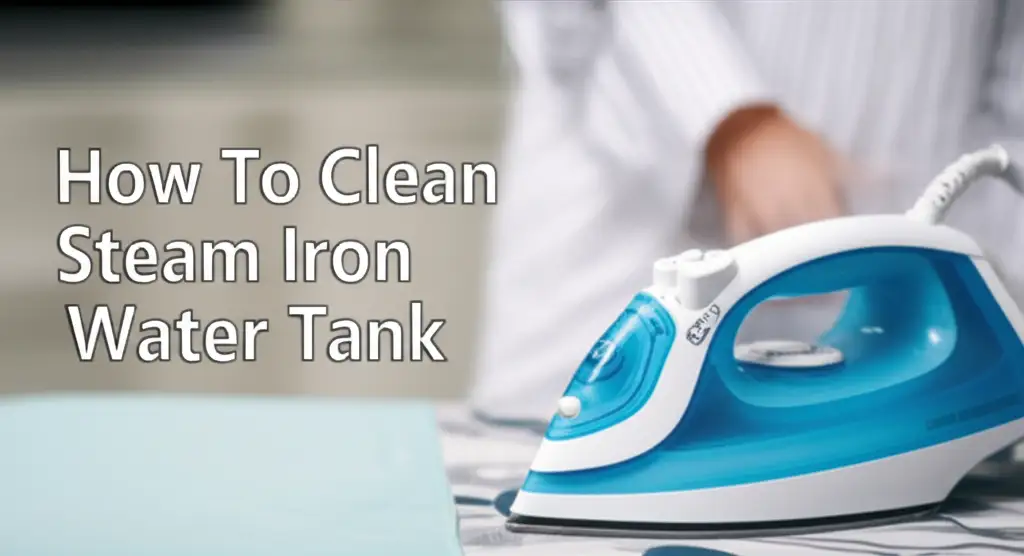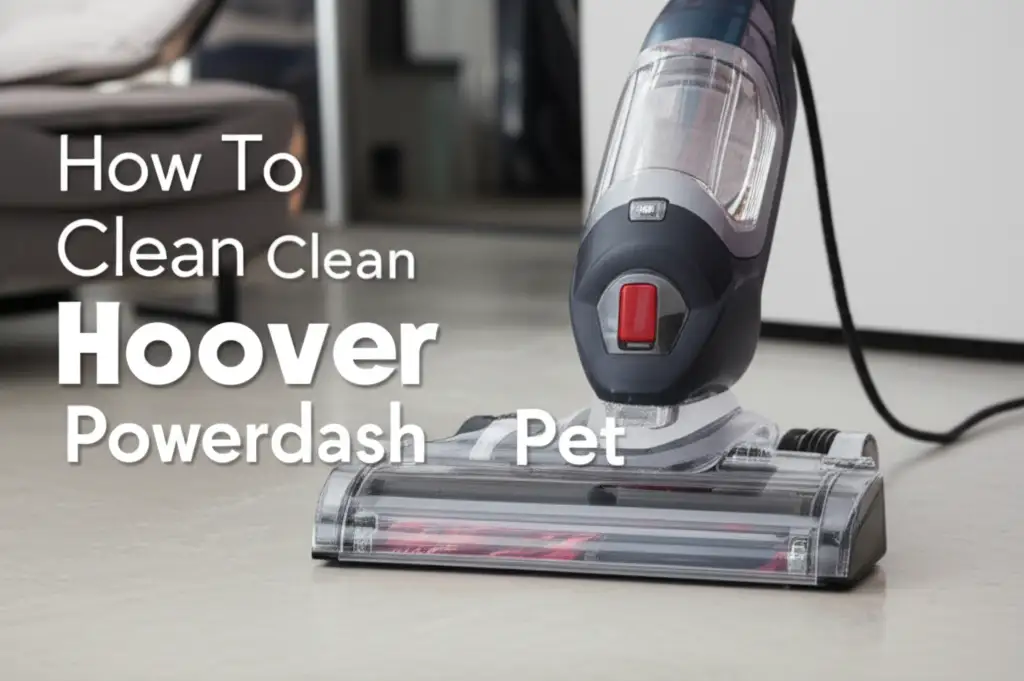· Appliance Care · 18 min read
How To Clean Ge Washing Machine

How to Clean Your GE Washing Machine Effectively
Keeping your laundry clean means your washing machine needs to be clean too. Many people overlook cleaning their washing machine, but it is an important step. Over time, residue from detergent, fabric softener, and dirt from clothes builds up. This buildup can cause unpleasant odors and affect how well your machine cleans. A dirty washing machine can even transfer grime back onto your clothes. This guide will show you how to clean your GE washing machine thoroughly. We cover both front-load and top-load models. You will learn the necessary steps and supplies to keep your GE appliance fresh and working its best.
Takeaway:
- Regularly clean your GE washing machine to prevent odors and residue.
- Use specific methods for front-load and top-load GE models.
- Pay attention to crucial parts like the gasket, dispenser, and filter.
- Employ common household cleaners like vinegar, baking soda, or bleach.
- Consistent maintenance extends your washer’s life and improves cleaning performance.
Clear Answer to Main Query:
To clean your GE washing machine, run a cleaning cycle using a washing machine cleaner, vinegar, or bleach. Manually scrub specific areas like the detergent dispenser, rubber gasket, and filter. This process removes detergent buildup, mold, and odors, ensuring your machine stays fresh and functions well.
Why Your GE Washer Needs Regular Cleaning
Your GE washing machine works hard to clean your clothes. It uses water, detergent, and agitation to remove dirt. However, some of this dirt, along with leftover detergent and fabric softener, does not rinse away completely. This residue accumulates inside the drum, dispenser, and various hidden parts. Over time, this buildup creates a damp environment perfect for mold and mildew growth.
You might notice a musty smell coming from your washer or even lingering on your freshly washed clothes. This smell signals the need for a deep clean. Mold and mildew are not just smelly; they can also be unhealthy. They reduce the efficiency of your washing machine. Regular cleaning prevents these problems. It ensures your clothes come out truly clean and fresh every time.
A clean washing machine also lasts longer. Buildup can clog hoses or damage internal components. This leads to costly repairs. By cleaning your GE washer often, you protect your investment. You maintain its performance and extend its lifespan. I make sure to clean my own GE washer every month to avoid any issues.
Essential Supplies for Cleaning Your GE Washer
Before you start cleaning your GE washing machine, gather the right tools and cleaning agents. Having everything ready makes the process smoother. You probably have most of these items in your home already. Using the correct supplies helps you achieve a thorough clean without damaging your appliance.
Here is a list of what you will need:
- White Vinegar: This is a natural cleaner and deodorizer. Its acidic nature helps break down mineral deposits and soap scum. Vinegar is safe for most washing machine components.
- Baking Soda: Baking soda is another natural deodorizer. It helps absorb odors and can scrub away grime. Combining it with vinegar creates a powerful cleaning action.
- Bleach (Optional): If you have severe mold or mildew, bleach can be very effective. Use it carefully and always follow dilution instructions. Bleach should not be mixed with vinegar, as it creates toxic fumes.
- Washing Machine Cleaner: Products like Affresh or Tide Washing Machine Cleaner are specifically designed for this task. They contain ingredients that break down residue and eliminate odors. These are often recommended by manufacturers like GE.
- Microfiber Cloths or Sponges: You will need these for wiping down surfaces. They are gentle but effective at picking up grime.
- Old Toothbrush or Small Brush: A small brush is useful for scrubbing tight spaces, like around the gasket or inside the dispenser.
- Spray Bottle: This is handy for mixing and applying cleaning solutions.
- Warm Water: For diluting cleaners and rinsing.
- Gloves: Protect your hands, especially when using bleach.
Choose your cleaning agent based on the level of dirt and your preference. Many people prefer natural options like vinegar and baking soda for regular cleaning. For tougher jobs or specific instructions, a dedicated washing machine cleaner or bleach works well. Remember, never mix different cleaning agents unless explicitly stated as safe.
Step-by-Step: Cleaning a GE Front-Load Washing Machine
GE front-load washing machines are popular for their water efficiency. However, their design can sometimes lead to mold and odors, especially around the door gasket. Regular cleaning is crucial for these models. This process ensures your clothes stay clean and fresh.
Follow these steps to clean your GE front-loader:
Cleaning the Drum and Internal Components
- Empty the Washer: Make sure there are no clothes or items left inside the drum.
- Add Cleaner:
- Using a Washing Machine Cleaner: Place one tablet or the recommended amount of liquid cleaner directly into the detergent dispenser or the drum.
- Using Vinegar: Pour two cups of white vinegar into the detergent dispenser.
- Using Bleach: Add half a cup of liquid chlorine bleach to the bleach dispenser. Do not use bleach if you just used vinegar or plan to use vinegar immediately after.
- Run a Self-Clean Cycle: GE front-loaders often have a “Basket Clean,” “Self Clean,” or “Washer Clean” cycle. Select this cycle and start the machine. This cycle uses hot water and specific agitation patterns to clean the drum. If your machine does not have a self-clean cycle, run a regular cycle on the hottest water setting. Set it to the largest load size.
- Wipe Down After Cycle: Once the cycle finishes, immediately wipe the inside of the drum with a clean cloth. This removes any loosened residue.
Cleaning the Gasket
The rubber gasket around the door seal is a common spot for mold and mildew in front-load washers. Dirt, hair, and lint often get trapped here. This area stays damp, promoting fungal growth.
- Inspect the Gasket: Pull back the folds of the rubber gasket. Look for any visible mold, mildew, or residue.
- Prepare Cleaning Solution: Mix equal parts white vinegar and warm water in a spray bottle. For tougher mold, you can use a small amount of diluted bleach (1 part bleach to 10 parts water) or a paste of baking soda and a little water.
- Scrub the Gasket: Spray the vinegar solution onto the gasket. Let it sit for a few minutes. Use a microfiber cloth or an old toothbrush to scrub away the grime and mold. Pay close attention to all the crevices and folds. For tough mold, you may need to apply a baking soda paste and let it sit for 15-30 minutes before scrubbing.
- Rinse and Dry: Wipe the gasket clean with a damp cloth. Then, thoroughly dry the gasket with a clean, dry cloth. Leaving it damp encourages mold return. Consistent drying is key to preventing mold. Learn more about how to effectively clean mold from your washing machine gasket here: how to clean rubber gasket in washing machine.
Cleaning the Dispenser Drawer
Detergent and fabric softener residue often builds up in the dispenser drawer. This can lead to clogs and sticky deposits. These deposits can then prevent your detergents from dispensing correctly.
- Remove the Drawer: Most GE dispenser drawers can be pulled out completely. Consult your owner’s manual if you are unsure how to remove it.
- Soak and Scrub: Soak the removable parts of the dispenser in warm, soapy water for about 30 minutes. Use a small brush or an old toothbrush to scrub away any sticky residue. Pay attention to all compartments.
- Clean the Compartment: Use a damp cloth and a small brush to clean the area where the dispenser drawer sits. This often has residue too.
- Rinse and Replace: Rinse the dispenser parts thoroughly under running water. Dry them completely before putting them back into the machine. If you have a GE Smart Dispense Washer, follow specific instructions for cleaning its unique system: how to clean ge smart dispense washer.
Cleaning the Drain Pump Filter
Many front-load washers have a drain pump filter designed to catch lint, coins, and other small items. If this filter gets clogged, it can affect drainage and cause odors.
- Locate the Filter: The filter is usually located at the bottom front of the machine, behind a small access panel. Place a shallow pan and towels underneath to catch any water that drains out.
- Drain Water: Carefully open the small hose or cap to drain residual water into the pan.
- Remove and Clean Filter: Unscrew or unclip the filter. Remove any lint, debris, or foreign objects. Rinse the filter under running water.
- Replace Filter: Screw or clip the filter back into place securely. Close the access panel.
Remember to leave the washer door ajar between uses. This allows air to circulate and the drum to dry. This simple habit significantly reduces moisture buildup and mold growth.
Step-by-Step: Cleaning a GE Top-Load Washing Machine
GE top-load washing machines are known for their reliability. While they don’t typically have the same gasket issues as front-loaders, they can still accumulate residue and develop odors. The cleaning process for a top-loader differs slightly based on whether it has an agitator.
Cleaning the Drum and Internal Components (General Top-Load)
- Empty the Washer: Ensure the machine is empty.
- Add Cleaner:
- Using Vinegar: Pour two cups of white vinegar directly into the empty wash tub.
- Using Bleach: Add half a cup of liquid chlorine bleach directly into the empty wash tub. Do not mix bleach and vinegar.
- Using a Washing Machine Cleaner: Place one tablet or the recommended amount of liquid cleaner directly into the drum.
- Run a Hot Water Cycle: Select the hottest water setting and the largest load size. Allow the machine to fill with water and begin agitation.
- Pause and Soak (Optional): If possible, pause the cycle after the machine has agitated for a few minutes. Let the water and cleaner soak in the drum for 30-60 minutes. This allows the cleaning solution to work on stubborn buildup.
- Resume and Finish Cycle: Resume the cycle and let it complete.
- Run a Rinse Cycle (If Using Bleach): If you used bleach, run a second cycle (hot water, no additives) to thoroughly rinse any remaining bleach from the machine. This step is crucial to prevent bleach from damaging your next load of colored laundry.
- Wipe Down: After the cycle finishes, wipe down the inside of the drum with a clean cloth.
Cleaning a GE Top-Loader with an Agitator
Agitator models have a central post that helps move clothes. This agitator can also collect residue and mildew underneath and around its base. It is important to clean it well. For more general top-loader cleaning tips, see how to clean washing machine top loader.
- Clean Around the Agitator: During the drum cleaning step, use a cloth dipped in the vinegar solution or soapy water. Wipe around the base of the agitator and any visible parts of it.
- Remove and Clean Agitator (If Possible): Some agitators can be removed for a deeper clean. Check your GE owner’s manual for instructions. If removable, soak it in hot, soapy water. Scrub all its surfaces and crevices with a brush. Rinse thoroughly before replacing. Detailed instructions for cleaning an agitator can be found here: how to clean agitator in washing machine.
Cleaning a GE Top-Loader Without an Agitator (Impeller Model)
These models use a low-profile plate or impeller at the bottom of the drum to move clothes. While they do not have an agitator, they can still collect residue underneath the impeller and along the drum walls. You might want to refer to specific instructions for these models here: how to clean ge washing machine top loader no agitator.
- Focus on Drum Walls: The primary cleaning steps for the drum apply. The absence of an agitator means more open drum space for cleaning.
- Clean Impeller Plate: After running the self-clean cycle, pay close attention to wiping down the impeller plate and the bottom of the drum. Use a cloth and a gentle cleaner to remove any film or residue.
- Check for Scrud: Scrud is the build-up of undissolved detergent, fabric softener, and lint. It often appears as a waxy film. In impeller models, it can collect more easily on the drum’s inner walls and under the impeller. You can learn how to tackle this specific issue here: how to clean scrud from washing machine. If you see scrud, you may need to scrub it manually or run an additional cleaning cycle with a stronger solution.
Tackling Odors and Mold in Your GE Washer
Persistent odors and visible mold are common issues in washing machines. They are usually caused by a combination of moisture, detergent buildup, and organic matter. Addressing these problems quickly ensures a healthier home and cleaner laundry. I always take immediate action if I notice any musty smells.
Dealing with Musty Smells
Musty smells arise when mold and mildew start to grow. This happens in damp environments, particularly in the rubber gasket of front-loaders or inside the drum of any machine that stays closed too often.
- Air Out the Machine: After every wash, leave the washer door or lid ajar for a few hours. This allows air to circulate and the drum to dry completely. This simple habit prevents mold from thriving.
- Regular Cleaning Cycles: Run a cleaning cycle monthly using hot water and white vinegar or a dedicated washing machine cleaner. This helps flush out odor-causing bacteria and residue.
- Wipe Down Regularly: Wipe down the drum, door, and dispenser areas with a clean, dry cloth after each use.
Removing Mold and Mildew
Visible mold requires a more targeted approach. Mold often appears as black spots on the door gasket or inside the dispenser.
- Bleach Solution (for severe mold): For rubber gaskets or hard surfaces, mix one part bleach with ten parts water in a spray bottle. Spray the affected areas and let it sit for 10-15 minutes. Wear gloves and ensure good ventilation.
- Scrubbing: Use an old toothbrush or a small scrub brush to thoroughly scrub the moldy areas. Pay attention to all crevices and folds.
- Vinegar and Baking Soda Paste (for less severe mold or bleach-free): Create a paste with baking soda and a small amount of water. Apply it to moldy areas. Let it sit for 15-30 minutes, then scrub vigorously. Follow with a wipe-down using undiluted white vinegar. For detailed methods using these natural ingredients, check out: how to clean washing machine with baking soda and vinegar.
- Rinse Thoroughly: Wipe down all cleaned areas with a damp cloth to remove any cleaning solution or loosened mold. Then, dry completely.
- Run a Clean Cycle: After manual scrubbing, run a full hot water cycle with no laundry. Add a cup of white vinegar or a washing machine cleaner to rinse the drum and internal components. If you used bleach manually, run a cycle with bleach, then a clear rinse cycle. For specific instructions on using bleach for a deeper clean, see: how to clean washing machine with bleach.
Preventative measures are key. Always remove wet laundry promptly. Do not overload the machine. Use the correct amount of high-efficiency (HE) detergent if your machine requires it. Too much detergent creates excessive suds and residue.
Maintaining Your GE Washer for Lasting Cleanliness
Regular maintenance ensures your GE washing machine remains a clean and efficient appliance. It prevents common problems like odors, residue buildup, and reduced performance. Establishing a consistent cleaning routine saves you time and effort in the long run.
Here are essential maintenance tips:
- Monthly Deep Clean: Make it a habit to run a “Basket Clean” or hot water cleaning cycle once a month. Use a washing machine cleaner, two cups of white vinegar, or half a cup of bleach. This flushes out hidden grime. I set a reminder on my phone to do this every first weekend of the month.
- Wipe Down After Each Use: After finishing your laundry, use a clean cloth to wipe down the inside of the drum. Pay special attention to the door gasket in front-loaders and the dispenser tray. This removes surface moisture and prevents immediate mold growth.
- Leave Door Ajar: Always leave the washing machine door (front-loader) or lid (top-loader) slightly open when not in use. This allows air to circulate inside the drum. It helps the interior dry out completely, which prevents mold and mildew from forming.
- Use HE Detergent (If Applicable): If your GE washer is an HE (High Efficiency) model, only use HE-specific detergents. These detergents produce fewer suds, which helps prevent residue buildup. Using too much regular detergent in an HE machine creates excess suds that are hard to rinse away.
- Use Correct Detergent Amount: Follow the detergent manufacturer’s recommendations. More detergent does not mean cleaner clothes. Too much detergent can leave residue in your machine and on your laundry.
- Clean Dispenser Regularly: Remove and clean the detergent and fabric softener dispenser drawer every few weeks. Residue often builds up here, which can then get pushed into your machine.
- Check Hoses and Connections: Periodically inspect the water inlet hoses and drain hoses for any signs of leaks or blockages. Ensure connections are secure. For issues with water flow, you might need to check the inlet valve: how to clean water inlet valve on washing machine.
- Empty Pockets: Always check pockets before washing clothes. Small items like coins, keys, or tissues can get caught in the pump filter or drainage system. They can cause blockages and damage.
- Avoid Overloading: Do not overload your washing machine. Overloading prevents proper water circulation and rinsing. This leaves more residue in the machine and on your clothes.
- Hard Water Considerations: If you have hard water, mineral deposits can build up inside your machine. Consider using a descaling product a few times a year. White vinegar in your cleaning cycles also helps with mineral deposits.
By following these simple maintenance steps, you ensure your GE washing machine operates efficiently and remains free from unpleasant odors and grime. A well-maintained washing machine provides clean, fresh laundry for years to come.
Frequently Asked Questions
Q1: How often should I clean my GE washing machine? A1: You should deep clean your GE washing machine at least once a month. If you wash frequently, live in a humid climate, or notice odors, consider cleaning it every two to three weeks. Regular maintenance, like wiping down the gasket after each use, helps prevent problems between deep cleans.
Q2: Can I use both vinegar and bleach to clean my GE washer? A2: No, never mix vinegar and bleach. Combining these two common cleaning agents creates toxic chlorine gas, which is very dangerous to inhale. Choose one or the other for your cleaning cycle. If you use bleach, ensure you run a clear rinse cycle before using vinegar, or vice versa, to avoid any mixture.
Q3: What if my GE front-load washer smells after cleaning? A3: If your GE front-load washer still smells after cleaning, the mold or mildew might be deeply embedded. Focus on thoroughly cleaning the door gasket, dispenser, and drain pump filter. Ensure you are leaving the door ajar after each use. You may need to run multiple hot water cleaning cycles. Consider a dedicated washing machine cleaner if odors persist.
Q4: Is it safe to clean my GE washing machine with baking soda and vinegar? A4: Yes, cleaning your GE washing machine with baking soda and vinegar is a safe and effective natural method. Vinegar acts as a disinfectant and dissolves mineral deposits, while baking soda neutralizes odors and aids in scrubbing away grime. Use them in separate steps or as a paste for direct application.
Q5: Where is the filter on a GE washing machine? A5: On most GE front-load washing machines, the drain pump filter is located at the bottom front of the machine, usually behind a small access panel or kick plate. For GE top-load models, there is typically no user-accessible drain pump filter to clean. Consult your owner’s manual for the exact location and removal instructions for your specific GE model.
Q6: What is the “Basket Clean” cycle on my GE washer? A6: The “Basket Clean” (or “Washer Clean,” “Self Clean”) cycle on your GE washing machine is a specialized cleaning cycle. It uses high water temperatures and specific agitation patterns to clean the inside of the wash drum and internal components. It is designed to remove detergent residue, mold, and odors without any laundry inside.
Conclusion
Cleaning your GE washing machine is a simple yet crucial task. It goes beyond just making your laundry smell good; it ensures the longevity and efficiency of your appliance. By following the comprehensive steps outlined, you can effectively remove dirt, soap scum, and unpleasant odors from both GE front-load and top-load models. Remember to pay special attention to the gasket, dispenser, and filter, as these areas are common spots for buildup.
Maintaining a regular cleaning schedule, ideally once a month, will keep your GE washer in top condition. Simple habits like leaving the door ajar after use and using the correct type and amount of detergent also contribute significantly to a healthier, cleaner machine. A clean GE washing machine means truly clean clothes and a fresher home environment for you. Take action today to give your GE washer the care it deserves!
- GE washer cleaning
- washing machine maintenance
- appliance cleaning
- front-load washer
- top-load washer




